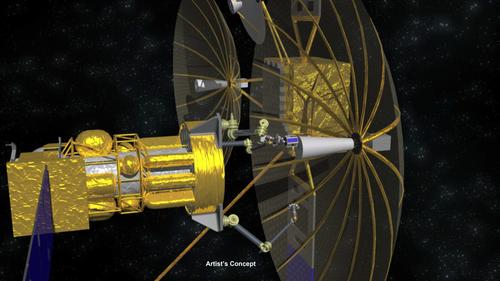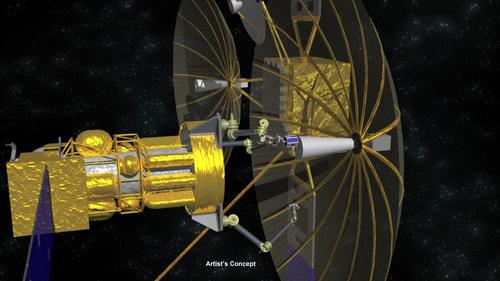Video: Robots to Recycle Space Junk
August 16, 2012

The military spends a lot of money on building communication satellites and sending them into space. Lots of them are still up there, long after they've failed or become obsolete.
Wouldn't it be neat to recapture and recycle the components, which are often still working, while also getting rid of all that space junk? The Defense Advanced Research Projects Agency (DARPA) thinks so, and it wants to use robots for the job.
The Phoenix program's goal is the development of technologies that can harvest the components of retired, nonworking geostationary earth orbit (GEO) communication satellites. Reusing those components, such as space apertures, solar arrays, and antennas, would slash the costs of building new ones. It might also speed their replacement, in the military's effort to maintain 24/7 global communication capability for soldiers on the ground.

Very small satellites, or "satlets," would ride along during commercial satellite launches in a payload orbital delivery system (PODS). Separately, an on-orbit tender, or satellite servicing satellite, will be launched into GEO. When the tender arrives on orbit, the PODS will detach itself from the commercial satellite host and connect with the tender.
The tender will be equipped with robotic grasping arms that will remove a satlet and attach it to, for example, the antenna of a nonfunctioning or decommissioned satellite that it has harvested from the graveyard orbit. The result is a new satellite created in GEO that's ready to be deployed. The robotic arms could also replace parts on, and perform other service tasks for, satellites that are still functional. (Watch the video below showing an artist's depiction of the proposed tender salvaging a retired satellite's still usable antenna.)
Several different technologies are needed for the Phoenix program, and many are still in development. As part of the project's first phase, DARPA has selected Honeybee Robotics Spacecraft Mechanisms to develop two different types of new telerobotic end effector prototypes for satellite rendezvous and docking. End effectors function as the hands of a robot arm, or manipulator. The prototypes will be designed to enable a servicing satellite to dock with and manipulate communications satellites in GEO.
Other robotics-related technologies being developed for the program include industrial robotics and tool changeout mechanisms, as well as remotely operated surgical robotics tools and imaging systems.
Related posts:
About the Author(s)
You May Also Like



